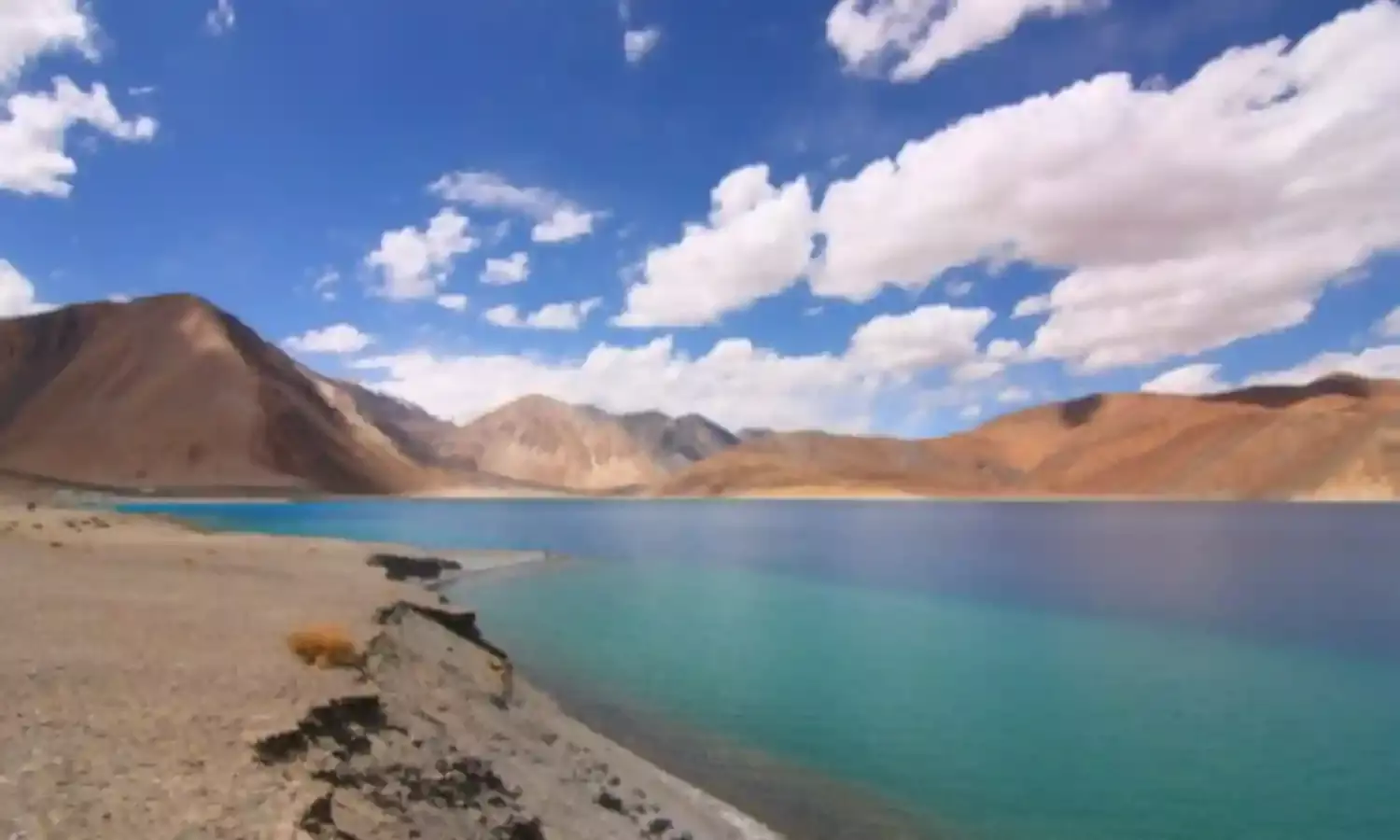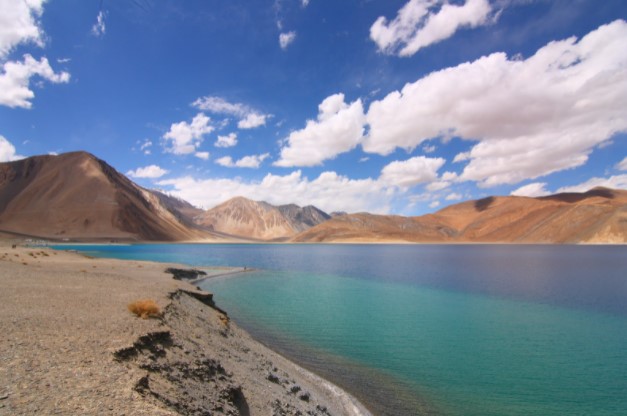Bridge over Pangong Tso
Do we have any red-lines at all?

Recent satellite imagery shows that China is constructing a bridge over the Pangong Tso in the area of Khurnak which is the narrowest point of the lake; 33°45’1N, 79° 1’26E at the northern end and 33°44’51N 79° 1’31E at the southern end of the bridge.
The bridge has been under construction for the past two months but we have chosen to keep quiet about it by default or design – most likely the latter since anything concerning China usually is hushed up or stated in ambiguous terms in our media.
Given the fact that the PLA is using prefabricated structures for constructing the bridge and the speeds of China’s infrastructure development, it should be completed soon.
The length of Pangong Tso is 134 km of which about 60 percent is controlled by China. The area of Khurnak Fort on the north bank of Pangong Tso (where the bridge is being constructed) has been under control of China since 1952 though not necessarily Chinese territory.
Interestingly, the outgoing Leh-based Corps Commander had tweeted that the said bridge under construction by the PLA is in Indian Territory. However, when the tweet was shown in a China-related TV discussion on January 7 by CNN News 18, the tweet was quickly deleted – wonder why?
Now some media is projecting that the bridge being built next to the Khurnak Fort is “just next to the LAC claimed by India.'' However, the bridge under construction is very much in Indian Territory under illegal occupation of China though the Chinese aggression in Eastern Ladakh during 2020 has effectively shifted the LAC westwards; with the PLA settled in the area of Finger 8 on the north bank of Pangong Tso and recent satellite imagery showing new PLA infrastructure and concentration of camps in Finger 8. Our patrols can no longer go up to Finger 8 as earlier.
The bridge over Pangong Tso next to the Khurnak Fort when completed will reduce the distance from Rudok (PLA’s main base servicing its deployments in Pangong Tso area) to 40-50 km instead of the present Rudok-Khurnak road distance of some 200 km.
Our media is propagating that with this bridge China wants to counter any Indian move to re-occupy the Kailash Range. Surprisingly, a senior army veteran not only endorsed this viewpoint during a TV discussion but also said that China is “scared” of us and we can re-occupy the Kailash Range in a “jiffy”.
This is a naïve view, perhaps to appease the policy makers which also would lull them into complacency, with China holding all the aces. What have we done for China to be scared of us – mobilization?
The Chinese invasion in Eastern Ladakh in May-June 2020 was with two motorized divisions. They could have easily launched a simultaneous prong of a brigade plus level south of the Pangong Tso making it very difficult for us. However, it was either planned in a later phase - same as the 20-km deep intrusion in the Bottleneck area of Depsang Plains was launched much after the Galwan clash.
The default gave us the opportunity to occupy the Kailash Range and probably a rap to the PLA commander in charge of the aggression.
But China bullied us into vacating the Kailash Range and took away the only ace we had at the bargaining table. In exchange the PLA withdrew to Finger 8 along the north bank of Pangong Tso while we fell back to the Dhan Singh Thapa post between Fingers 2 and 3. In between is a 10-km no patrol zone and China has a metal road running west up to Finger 4. China is the clear winner and the government still has to explain how China bullied us into this arrangement. What was the threat and why did we capitulate when we claimed we were fully mobilized?
Coming to the bridge China is building over Pangong Tso, if we can re-occupy Kailash Range in a jiffy (as being claimed), why would China build this bridge? Are we scared to acknowledge that China can use this bridge to further offensive operations at the time of its choosing which may not be in too distant a future?
Adverse weather and visibility apart, has China the capability to at least temporarily jam our communications and blind our surveillance systems, aside from using multiple modes to get on to the Kailash Range? The fact is that this bridge will facilitate a multi-pronged Chinese thrust along both banks of Pangong Tso?
We ignored the PLA’s two motorized divisions exercising in Aksai Chin during April-May 2020 and even the new road China had constructed just five kilometers short of Galwan.
The sheepish excuse inserted in the media, after the Chinese aggression, was that “we knew the PLA could occupy the new locations in 24-36 hours but never thought they would do so”. Threats are analyzed based on enemy capabilities not on intentions which can change overnight. We may end up doing the same when China uses the bridge over Pangong Tso for an offensive thrust.
If the bridge under construction by the PLA is to stop us from reoccupying the Kailash Range in our own territory, should we not demand China to stop construction or reoccupy the Kailash Range before the PLA bridges the Pangong Tso?
No doubt China will snub our demand but can we muster the courage to reoccupy the Kailash Range even if we have to ‘borrow some guts’ from Vietnam, Israel or Taiwan? Why not if we are fully mobilized? Some policymakers may die of shock at the suggestion but do we have any red-lines at all?
China ‘only’ respects strength, not purring kitten-like and getting thrilled about a counter video of Galwan. How long will we duck under the diplomatic crap to wait till we are at par with China militarily and economically – 25 years? Amid all the clichés and sloganeering, how about initiating: ‘Standup India’.
Lt General Prakash Katoch is a veteran of the Indian Army. The views expressed are personal




